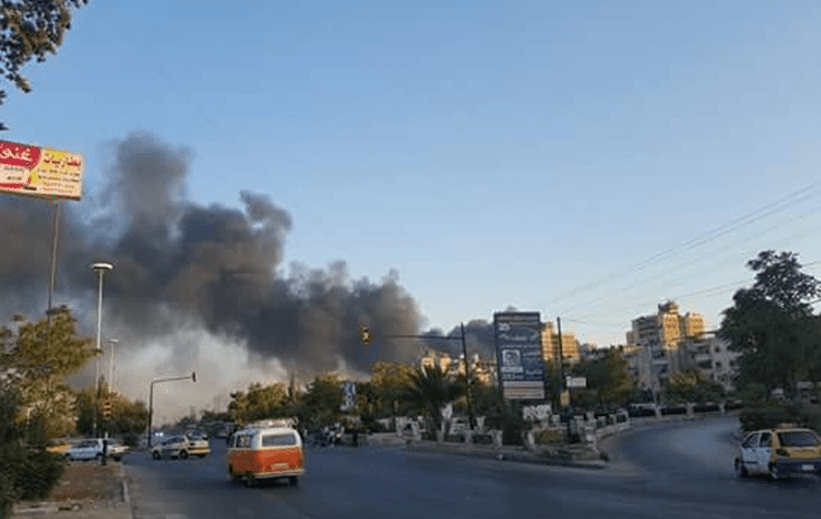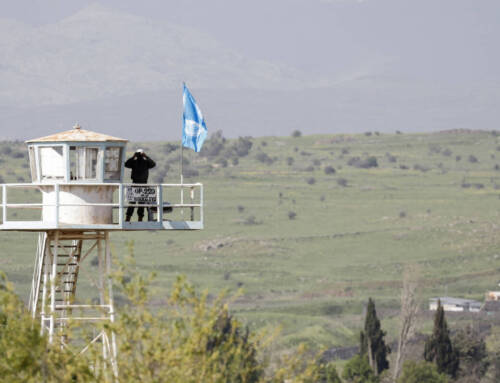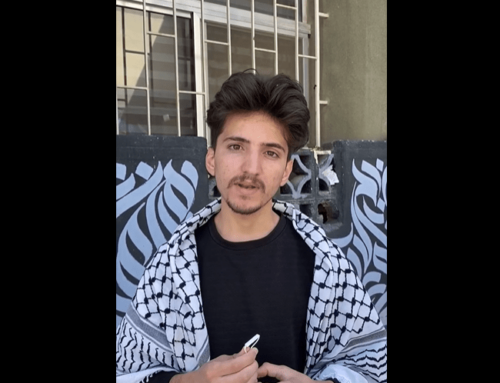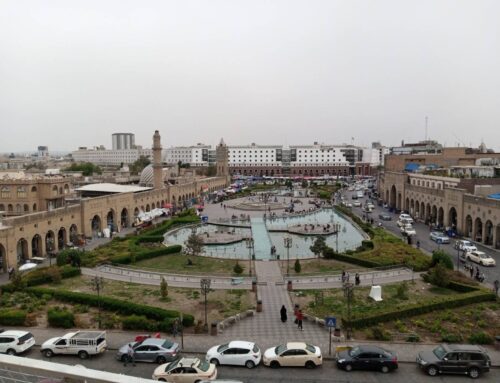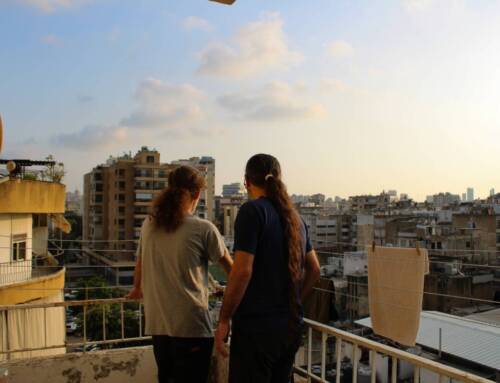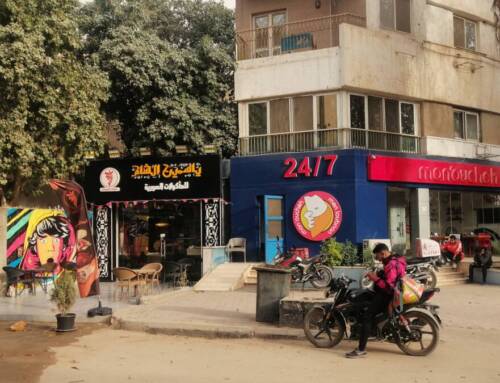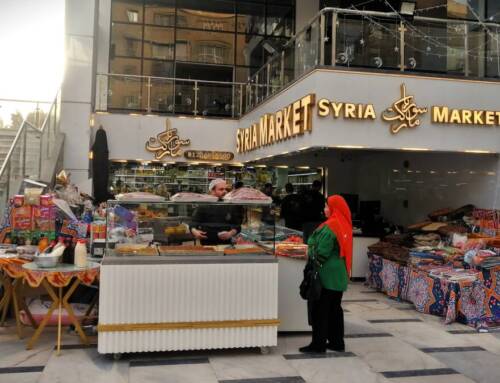Pro-regime media cedes little ground as west Aleppo residents demand to know ‘who is really in control’
AMMAN: It was Saturday afternoon in west Aleppo when the […]
11 August 2016
AMMAN: It was Saturday afternoon in west Aleppo when the sound of battles that had been off in the distance came closer. Much closer.
One week before, rebel forces launched an unexpected attack in southwest Aleppo city. Instead of trying to break through the regime blockade of Castello Road in Aleppo’s north, rebel forces, including the Islamist Victory Army coalition and Fatah Halab Operations Room, identified a potential vulnerability in the city’s southwest.
The southwest district of Ramouseh sits just west of Sheikh Said, which is in east Aleppo, the rebel-held half of the city that fell under a regime blockade last month.
As the fighting intensified in Ramouseh—home to a number of military colleges—and overflowed into nearby, regime-held al-Hamdaniyah, residents asked themselves: Would they need to run? Would government forces and their allies drive back the rebel advance? What was really happening?
According to the Syrian state media, the answer was: not much.
There’s “no truth to the rumors being spread….about the terrorist groups taking control of the Ramouseh circle south of Aleppo,” SANA reported Saturday August 6, citing a correspondent in Aleppo. Regime airpower had established a cordon in the “area of operations in the surrounding of the military college in Aleppo.”

“Official media said the clashes were at [Ramouseh’s] outskirts,” Khaled a-Shami, a resident of regime-held Damascus who is currently in west Aleppo told Syria Direct. “After two full days of rebel control, it was talking about bringing reinforcements in order to retake some small positions.”
A-Shami travelled to Aleppo just before the latest battles, and found himself trapped when rebels took control of Ramouseh and cut the road back to the capital.
“After five years of the crisis in Syria, what matters to us is knowing the truth, who’s really in control of what, how close the danger is,” said Muhammad al-Halabi, a pro-regime citizen journalist in west Aleppo, using a false name.
Syrian state media outlet SANA, the Organization of Syrian Arab Radio and TV (ORTAS), Hezbollah’s Al-Manar channel, Lebanon’s al-Mayadeen, Iran’s Arabic-language outlet al-Alam, among others, distribute reliably one-sided coverage of the Syrian regime’s narrative of the war.
On the other side, an array of pro-opposition media, ranging from well-established networks such as Halab Today, Smart News, Enab Baladi and Orient News to the media wings of rebel factions, present news through the lens of anti-Assad sentiment.
Then there is the grassroots media. City districts, towns and villages have their own Twitter accounts and news pages on Facebook, many run by citizen journalists. Some towns have both pro-regime and pro-rebel accounts. Some pages are administrated by residents now living in Europe.
The Civil Defense posts updates on bombings. Journalists—those embedded in battles, on assignment for networks, or covering battles outside their front door—post pictures and videos on their personal social media accounts.
Amidst the fog of war comes a dizzying blur of information, each report or status update written in its own shorthand: terrorists are being repelled, the mujahideen are advancing. And on both sides, civilians are martyred. By bombs, by airstrikes, illness and siege.
It’s information overload. The question is, is it useful?
For civilians on the ground and in the eye of the media storm, access to reliable information about ongoing military developments can be a matter of life and death. Information means knowing when to run and when to stay. It means knowing when to stockpile food and fuel, if possible.
Information was what residents of regime-held west Aleppo neighborhoods were looking for as they watched and waited over the past week, ferocious battles raging to the south as rebels fought regime forces to break through a month-long siege of opposition-held east Aleppo, which they did on Saturday.
“We need to know who’s really in control so we know how close or far the danger is,” al-Halabi told Syria Direct.
“Official media channels and their partners such as Al-Manar and al-Mayadeen stay away from reality,” said al-Halabi, a citizen journalist who contributes to a local news group on Facebook.
“We’ve turned to social media pages so our people know the details that matter to them, that impact their fates.”
Khaled a-Shami, the Damascene stuck in west Aleppo, said that as the battles continue, some residents are looking to pro-opposition outlets in order to better understand the situation on the ground.
“Most of my friends in Aleppo follow the [opposition] Halab Today TV page on Facebook, as well as Shaam News Network,” said a-Shami. Pictures and videos posted from activists on the ground also help residents ascertain where exactly the battles are.
“We are at the closest flashpoint with the rebels,” one resident of al-Hamdaniyah says. “We shouldn’t have to go out into the streets and put ourselves in danger in order to know the truth,” he said, requesting anonymity.
“We don’t want to fall victim to the media’s lies.”
‘Limitations that can’t be overcome’
International media outlets including Reuters, the Associated Press and Sputnik reported that rebels broke through regime lines in southern Aleppo city on Saturday.
That same day, at roughly 7pm local time, Syria’s official ORTAS painted a serious but optimistic picture of ongoing “violent clashes” against “terrorist groups” and confirmed a large attack on the military colleges in Ramouseh.
Increased airstrikes “paralyzed rebel movement in southwest Aleppo,” the media organization reported, citing an unnamed military source.
Four hours later on Saturday, the pro-regime Nubbol Alzahraa News Facebook page reported the control of “gunmen” over the military colleges and other positions in Ramouseh. “The road to Aleppo is cut and impassable,” according to the page, which was not reported at the time by state media.
Rida al-Basha, a correspondent for Lebanon’s al-Mayadeen channel, currently in Aleppo covering the fighting, says there are limitations inherent in his work, but adds that he and his colleagues are doing all they can to provide accurate coverage.
“The channels aren’t that bad, and we as correspondents are working to report the facts,” said al-Basha. “But there are limitations that can’t be overcome, like timing and the reporter or correspondent’s commitment to the policy of the channel he’s working for.”
Outside official channels, al-Basha said that he and his colleagues post news on social media to provide continuous coverage of the battles, “so everybody knows the whole truth. This is our true principle.”
“In the end, we are within a war that is huge, militarily and in the media, and there are many variables.”
For residents, the variables are simple.
“We care about the reality of what’s going on,” Munir al-Halabi, the regime supporter in west Aleppo’s al-Nubalaa district told Syria Direct.
“If the media meant to spread falsehoods to boost morale, a soldier’s morale comes from the battlefield, not the media.”
On Thursday, the regime conducted several airstrikes on rebel positions in southwest Aleppo in an attempt to drive rebels out of recently captured territory.
“People’s conversations, and their constant fear, is that the battles are getting closer to them,” Khaled a-Shami told Syria Direct. “Every time the battles get closer, I notice more ideas and conversations about leaving Syria.”
“Nothing matters now but the truth, so we know our fate, and how to deal with the situation as civilians,” said the Hamdaniyah resident.
“Our families are our first concern,” he said.
“We don’t want to be caught unawares by gunmen, God forbid, inside our homes.”

